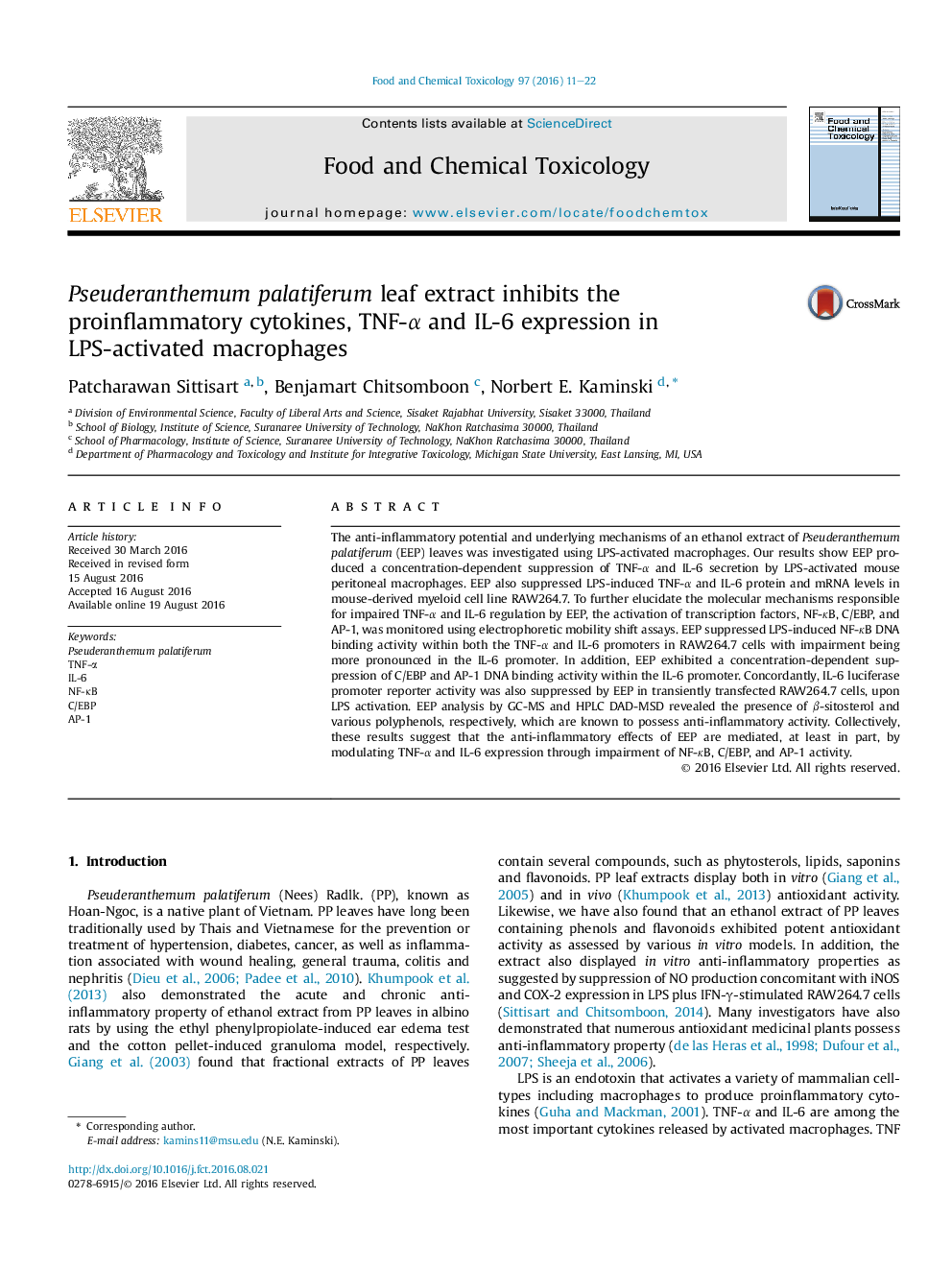| کد مقاله | کد نشریه | سال انتشار | مقاله انگلیسی | نسخه تمام متن |
|---|---|---|---|---|
| 2584820 | 1561747 | 2016 | 12 صفحه PDF | دانلود رایگان |
• Pseuderanthemum palatiferum leaf extract possesses anti-inflammatory activity.
• Pseuderanthemum palatiferum-mediated anti-inflammatory activity from TNF-α and IL-6.
• Pseuderanthemum palatiferum occurs transcriptionally by NF-κB, C/EBP, AP-1 activity.
The anti-inflammatory potential and underlying mechanisms of an ethanol extract of Pseuderanthemum palatiferum (EEP) leaves was investigated using LPS-activated macrophages. Our results show EEP produced a concentration-dependent suppression of TNF-α and IL-6 secretion by LPS-activated mouse peritoneal macrophages. EEP also suppressed LPS-induced TNF-α and IL-6 protein and mRNA levels in mouse-derived myeloid cell line RAW264.7. To further elucidate the molecular mechanisms responsible for impaired TNF-α and IL-6 regulation by EEP, the activation of transcription factors, NF-κB, C/EBP, and AP-1, was monitored using electrophoretic mobility shift assays. EEP suppressed LPS-induced NF-κB DNA binding activity within both the TNF-α and IL-6 promoters in RAW264.7 cells with impairment being more pronounced in the IL-6 promoter. In addition, EEP exhibited a concentration-dependent suppression of C/EBP and AP-1 DNA binding activity within the IL-6 promoter. Concordantly, IL-6 luciferase promoter reporter activity was also suppressed by EEP in transiently transfected RAW264.7 cells, upon LPS activation. EEP analysis by GC-MS and HPLC DAD-MSD revealed the presence of β-sitosterol and various polyphenols, respectively, which are known to possess anti-inflammatory activity. Collectively, these results suggest that the anti-inflammatory effects of EEP are mediated, at least in part, by modulating TNF-α and IL-6 expression through impairment of NF-κB, C/EBP, and AP-1 activity.
Journal: Food and Chemical Toxicology - Volume 97, November 2016, Pages 11–22
